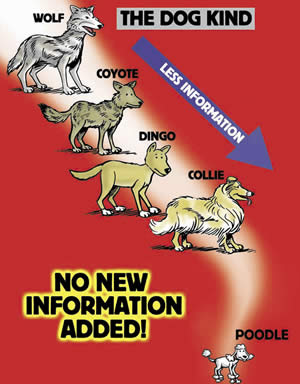When God warned Noah about the great Flood, He told him to build an enormous Ark to preserve Noah, his family, and at least two of every kind of land animal and flying creature. For centuries scoffers have mocked this account, claiming that it was impossible for the Ark to hold two of every kind.
As early as the second century AD, a Gnostic heretic named Appelles wrote that the Ark could not hold even two elephants. According to Appelles, this supposed error in Genesis showed that the Flood account could not have been inspired by God.1 Such arguments are still with us today. Scoffing isn’t going to stop, no matter how eloquently we explain the Ark account, because ultimately, the Bible must be accepted by faith, not by sight. Those without faith just can’t understand.
Scholars in past centuries tried to defend the Bible’s account of the Ark by expounding on details, such as how it might have been built; how food was stored and waste removed; and of course, how many animals were aboard. Their answers, especially in response to the last question, are very revealing. Writing in 1559, geometrician Johannes Buteo put the number of animals on the Ark in the hundreds.2 So did the first secretary of the Royal Society, Anglican Bishop John Wilkins in 1668.3 One reason for such low numbers was ignorance about animals in other parts of the world; for instance, neither Wilkins nor Buteo included kangaroos in their lists. But the more interesting reason is their view of “species,” most fully elaborated in Athanasius Kircher’s 1675 Arca Noë.4
Kircher, a Jesuit priest and scholar, concluded from his research that some of our modern species of animals were not on Noah’s Ark because they originated from other species after the Flood by a kind of divinely guided metamorphosis. In other words, after the Flood, some animals changed and generated new species. In this way, God did not have to preserve every modern species on the Ark. For example, Kircher believed that the North American bison was not aboard the Ark.5 He thought it might have originated after the Flood from some other cow-like animal.
Writing seven years before Kircher, Bishop Wilkins thought the same thing. When discussing the number of cattle on the Ark, he wrote that Noah needed only two basic cattle, arguing, “There being much less difference betwixt these, then there is betwixt several Dogs: And it being known by experience what various changes are frequently occasioned in the same species, by several countries, diets, and other accidents.”6 Like Kircher, Wilkins did not see a need (other than responding to skeptics) to put two bison on the Ark because they presumably could be generated from some other cow after the Flood “by several countries, diets, and other accidents.”6
This early view of animals and the Ark, which developed in the sixteenth and seventeenth centuries, is very similar to that of many creationists today. Creationist pioneer Byron Nelson wrote in 1928, “It is ... unjust to the Sacred Record to insist that the ark carried two of every variety, e.g., two fox terriers, two coyotes, two wolves, two jackals, two collies, etc. It is better to say that the ark carried two animals we might call ‘dogs,’ from which, after the flood, all the above-mentioned varieties have come.”7
For land animals and birds, the created kind most often corresponds to the conventional classification rank called “family.”
Based on my own biological research into created kinds, I would be even bolder than Nelson. Over the past decade, I have worked to develop new methods of studying created kinds using statistics.8 This research is still very new and preliminary, but a pattern is beginning to emerge. For land animals and birds, the created kind most often corresponds to the conventional classification rank called “family,” which includes many species. There is evidence that the camel, horse, cat, dog, penguin, and iguana families are each a created kind.9 Like Nelson, I would put the coyote, wolf, jackal, and dog in the same kind, and I would include the fox. I would put the lion and house cat in another kind, and the llama and camel in yet another kind. Today these species (i.e., llama and camel) look amazingly different, but they seem to have been generated after the Flood from information already present within their parent kind. Lions, coyotes, and dromedary camels were probably not on the Ark but were born to parents within the cat, dog, and camel kinds.
How many animals were on Noah’s Ark? If created kinds really are families, as few as 2,000 individual animals might have been on the Ark.10 There were probably a bit more than that since the clean animals came in by sevens. Whatever the exact number, though, there would have been plenty of room to house these and their food, plus Noah and his family. Caring for these animals for a year would have been difficult but not impossible. God’s wisdom ensured that basic kinds of animals would survive the Flood by allowing individual species to change.
Orchard vs. Tree

The evolutionary “tree” (above right) postulates that all today’s species are descended from the one common ancestor (which itself evolved from nonliving chemicals). The creationist “orchard” (above left) shows that diversity has occurred within the original Genesis kinds over time.1
Baraminology is the study of the biblical created kinds. The term baraminology is derived from the Hebrew words bara, which means “to create,” and min, which means “kind.” This field of study shows, for example, that the many dog species that we find throughout the world today—including the coyote, the wolf, the fox, the border collie, and the jackal—may all descend from one original created kind, created by God on Day 6 of Creation Week.
